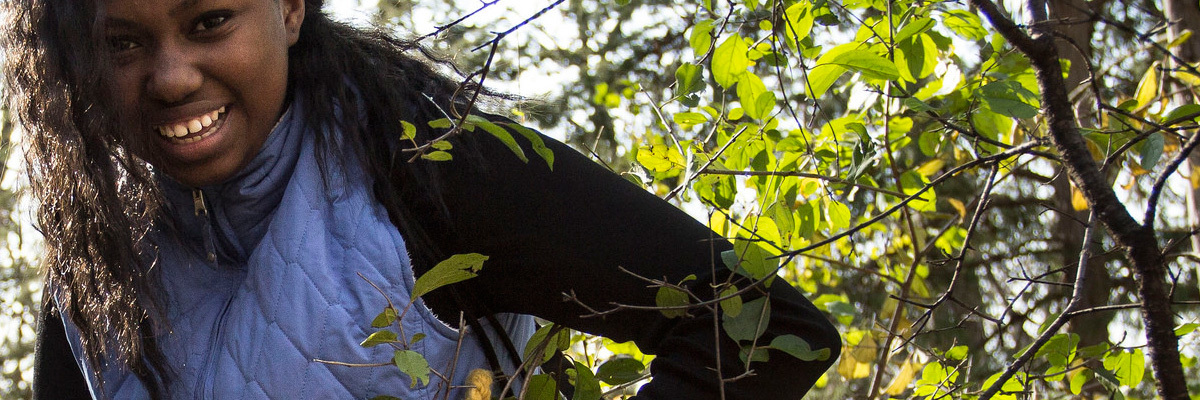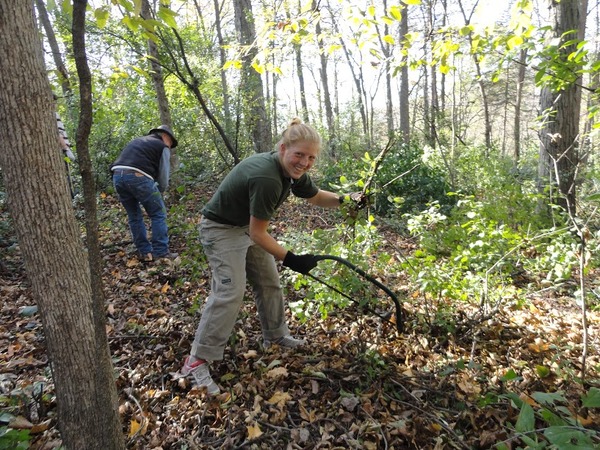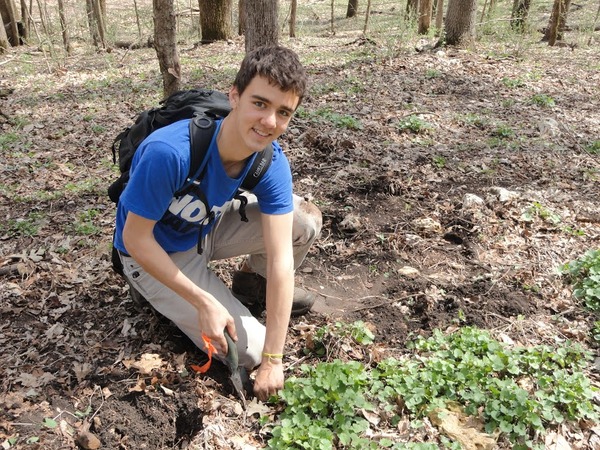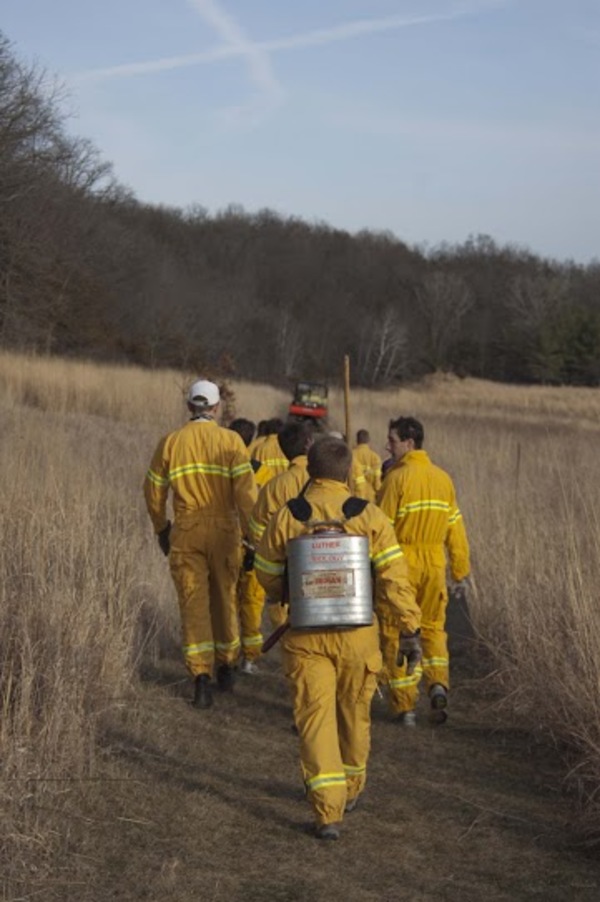An Iowa College in the Liberal Arts Tradition
Biology
Ecological Restoration Events
Volunteers have the power to make a difference on our natural areas. With a bit of training and equipment provided by the land stewardship team, volunteers quickly remove invasive species from a target area, pick up trash deposited in the Upper Iowa River Floodplain, or plant native trees and shrubs.
Volunteer events not only help to restore native habitats, but are great team-building opportunities. For example, the men and women’s soccer team contacted the land stewardship crew when they were interested in planning a service project at the start of their practice season—they removed buckthorn from the woods that border the athletic fields. Community members are also encouraged to participate in planned events for a chance to get out in the woods or to see how restoration work might be applied on your own land. Please contact us at Land Stewardship if you would like to be on an email list about events.
Regularly scheduled events include:
- Buckthorn Blitz (fall)—Join us to cut and treat buckthorn adults and pull seedlings. After a brief introduction to non-native, invasive European buckthorn (Rhamnus cathartica) and honeysuckle (Lonicera spp) identification, volunteers quickly find the rhythm of working with a partner, finding the next stem, and calling out for herbicide stump treatment.
- Garlic mustard pulls (spring)—Spring is a great time to get to know our oak-hickory woods and spring wildflowers, and pulling garlic mustard gives the great satisfaction of making a difference. It’s also that time of year in the Midwest when we use any excuse to get outside! Students regularly volunteer to remove garlic mustard in other local natural areas with Decorah city parks and the Iowa Natural Heritage Foundation. Biology department professors Beth Lynch and Mary Lewis (emeritus) received statewide recognition from the Iowa Natural Heritage Foundation for organization and education about garlic mustard in Decorah city parks.
- Prescribed fire (spring, fall)—Fire is a natural disturbance in our landscape applied in our prairies and woodlands for various objectives, including woody species reduction, litter consumption, and control of some invasive species. The prescribed fires, a.k.a, controlled burns, we set on campus are selected based on our objectives, with attention paid to historical disturbance regimes (e.g., how often did fire occur in a similar landscape in the past), phenology of the species that are targeted (for increase or reduction), and protection for native species that are fire intolerant (e.g., certain insects or birds need unburned locations for food and/or shelter).
About Prescribed Burns
Anyone wishing to participate in a prescribed fire MUST attend the prescribed fire training session, which is an hour session on fire behavior and prescribed burn safety. Training sessions are typically offered in the spring and fall before the start of the burn season.
- What to wear: Volunteers should wear natural materials, i.e., cotton, wool, silk) and NOT synthetics such as nylon or polyester, which melt or burn easily. Common clothing to wear are cotton jeans and t-shirts. Old tennis shoes work fine, but leather soled boots (no steel toes) are even better.
- What to bring: Water bottle for drinking. You might also want to bring: bandanas (one for smoke reduction, and another for your hair), sunglasses, carabiner to attach your water bottle to your belt loop.
- We provide: Nomex fire suits, leather work gloves, and all fire equipment, including flappers, water packs, etc.
- Participating in the burn: Before the event, respond to email that you can attend, so we know whether we have a large enough crew to safely conduct the burn. When you get to a burn, show up at the assigned meeting place. Sign in. Find a fire suit that fits. Then, suit up and grab a pair of leather gloves. The burn boss will introduce the burn unit, safety hazards, objective of the fire, and line assignments. From time to time, we need volunteers to help with maintaining safe burn breaks, especially if it’s a larger burn unit. Calls for break construction and maintenance usually occur in the weeks before the fire.
- Native prairie plant sale at the Winneshiek County farmers market in Decorah, Iowa (spring). In 2013, we started selling native prairie plants at the farmers market in May (Saturday mornings). All plants are grown from local ecotype, native seed collected from our own prairies. Plants are grown in the biology department greenhouse. Volunteers help transplant seedlings into larger pots (February and March) and on the day of sales (moving plants from the greenhouse to the market) and are available from Winneshiek County Farmer's Market.
- Trail construction and maintenance (summer): Some summers we have trail re-routes, new trails, or trail reconstruction projects. Trail work is necessary to reduce or repair damage from erosion, regular use, connect to new natural areas, and/or make trails safer.
- Want to organize an event? Be the motivator for your class, organization, sports team, or group of friends. Activities MUST be coordinated through the natural areas land manager—we’ll direct you to projects that can be accomplished with the number of people you have and your interests. You advertise and organize your group. For most activities, we coordinate the event, provide training for your group, and equipment necessary for the work.
Our core land stewardship team is at work on the natural areas every week during the school year and full time during the summer. Contact us if you would like to join us on regular field days.
Find out about upcoming events: To be notified of upcoming events, including prescribed fire crew, email Dr. McNicoll.




